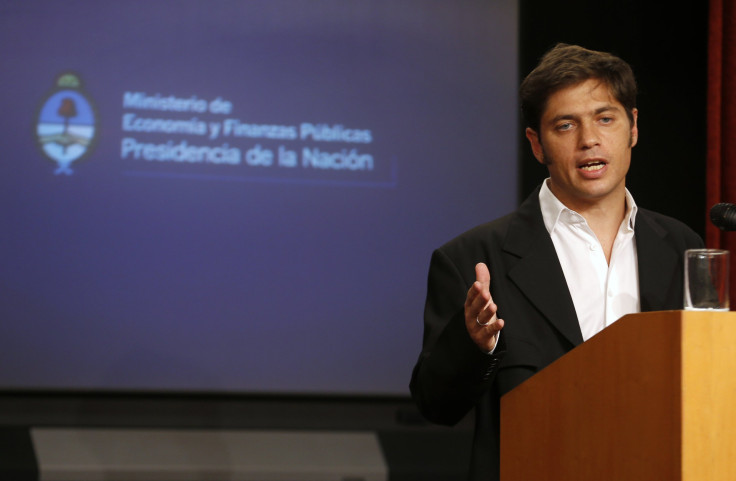Argentina Reaches $9.7 Billion Debt Payment Agreement With Paris Club Countries

After seven years of financial crisis and rampant inflation, Argentina has reached an agreement with its international creditors.
Finance Minister Axel Kicillof met on Wednesday with the Paris Club, an informal group of economic officials from 19 countries that offers advice on debt relief. After 17 hours of negotiation, they drafted a plan: Argentina has committed to paying the $9.7 billion debt it owes to creditors in the Paris Club within the next five years.
“We have been trying to find a solution to our debt since 2008,” said Kicillof after the meeting. “The global financial crisis delayed our project.”
The current government will foot the bill for the first two payments: $650 million before July, and an extra $500 million before May 2015. After the next presidential election, in October 2015, the remaining $8.5 billion will be the responsibility of the new administration.
Kicillof said he is confident Argentina will meet the five-year deadline if the Paris Club member countries help, such as participating in major investments in the country. If such help is not provided, the deadline for the debt payment will be extended for two years.
Argentina owes money to 14 of the club’s 19 members. The biggest creditor is Germany (30 percent of the total debt), followed by Japan (25 percent), the Netherlands (9 percent), Italy (8 percent) and the U.S. (7 percent).
International analysts have called the deal a “positive step,” but much more needs to be done. “The economy remains in a precarious position,” said David Rees, emerging markets economist from London-based Capital Economics, mentioning GDP negative growth, inflation and currency devaluation.
President Cristina Fernandez de Kirchner recently admitted that her country was facing financial hardship. After years of masking its true inflation rates -- the government maintained its rate was 6 percent annually, whereas independent studies said it was 26 percent -- the government finally owned up to the real numbers in February.
The Argentinean peso dropped 20 percent against the dollar in January. It already held the dubious honor of being South America’s third most devalued currency versus the dollar in 2013, with a total 23 percent drop.
The country officially entered recession in March, when reports showed that GDP had contracted for the second consecutive quarter: a negative 1.5 percent growth rate in Q1 2014, after minus 0.4 percent in Q4 2013.
“While the government has made strides towards policy normalization since the start of the year, there is still significant risk that events will take a turn for the worse over the coming months,” Rees said.
© Copyright IBTimes 2025. All rights reserved.





















